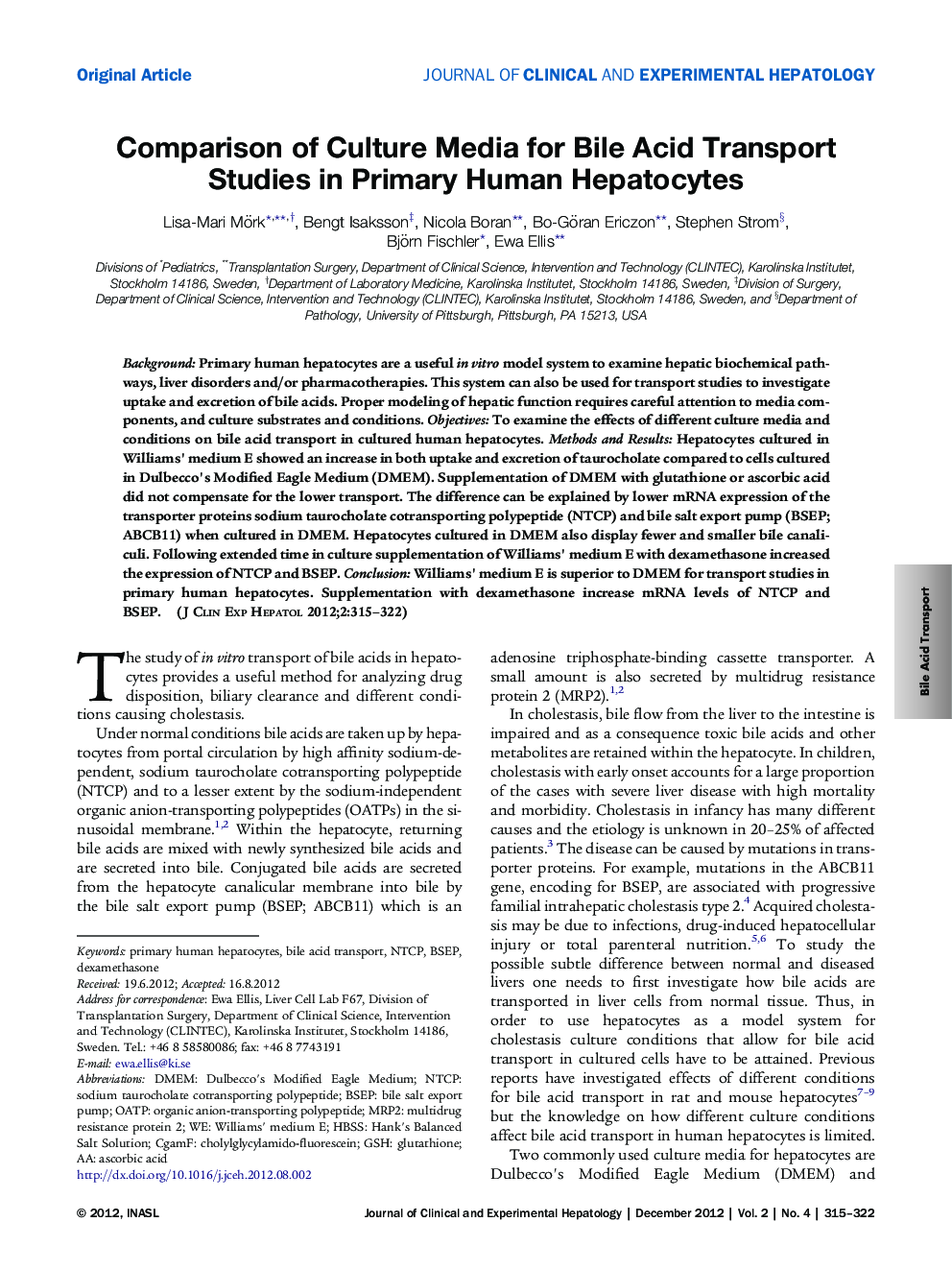| Article ID | Journal | Published Year | Pages | File Type |
|---|---|---|---|---|
| 3338710 | Journal of Clinical and Experimental Hepatology | 2012 | 8 Pages |
BackgroundPrimary human hepatocytes are a useful in vitro model system to examine hepatic biochemical pathways, liver disorders and/or pharmacotherapies. This system can also be used for transport studies to investigate uptake and excretion of bile acids. Proper modeling of hepatic function requires careful attention to media components, and culture substrates and conditions.ObjectivesTo examine the effects of different culture media and conditions on bile acid transport in cultured human hepatocytes.Methods and ResultsHepatocytes cultured in Williams' medium E showed an increase in both uptake and excretion of taurocholate compared to cells cultured in Dulbecco's Modified Eagle Medium (DMEM). Supplementation of DMEM with glutathione or ascorbic acid did not compensate for the lower transport. The difference can be explained by lower mRNA expression of the transporter proteins sodium taurocholate cotransporting polypeptide (NTCP) and bile salt export pump (BSEP; ABCB11) when cultured in DMEM. Hepatocytes cultured in DMEM also display fewer and smaller bile canaliculi. Following extended time in culture supplementation of Williams' medium E with dexamethasone increased the expression of NTCP and BSEP.ConclusionWilliams' medium E is superior to DMEM for transport studies in primary human hepatocytes. Supplementation with dexamethasone increase mRNA levels of NTCP and BSEP.
